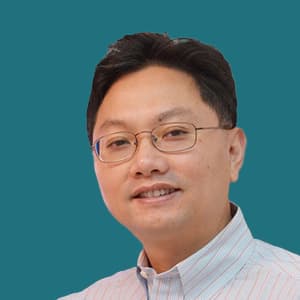OTOF Gene Therapy Restores Hearing in Children With Autosomal Recessive Deafness 9
Speech perception was also greatly improved in the children with hearing recovery.
Zheng-Yi Chen, DPhil

Five of 6 children with autosomal recessive deafness 9 (DFNB9) caused by mutations of the OTOF gene had significant, clinically meaningful improvements in hearing after receiving AAV1-hOTOF gene therapy as part of a clinical trial conducted at the Eye & ENT Hospital of Fudan University in Shanghai, China, in collaboration with investigators from Mass Eye and Ear.1
“To us, this is a truly remarkable. These are children that are completely deaf before the treatment. Some of them have cochlear implants, some of them don't have anything. Without cochlear implant, you don't hear a thing... But after treatment, we restore hearing to a degree that they can hear and have conversation,” investigator Zheng-Yi Chen, DPhil, associate scientist, Eaton-Peabody Laboratories, Mass Eye and Ear, and associate professor, Otolaryngology–Head and Neck Surgery, Harvard Medical School, told CGTLive. “This treatment is really not only to prevent the hearing loss; it really reversed the hearing loss that already happened. The patients regained the capacity to hear and speak. The children in our treatment sample regained speech capability. That's basically the bottom line.”
The new data are from 6 participants that Chen and colleagues have treated in the single-arm, single-center trial. Five received a 1·5×10¹²vector genome (vg) dose and 1 received a 9×10¹¹ vg dose. Five children, including the participant that received the higher dose, had hearing recovery and significant reductions in the average auditory brainstem response (ABR) thresholds at 0·5–4·0 kHz shown(range, 40–57 dB).
“If children are unable to hear, their brains can develop abnormally without intervention,” Chen said in a statement.2 “The results from this study are truly remarkable. We saw the hearing ability of children improve dramatically week by week, as well as the regaining of their speech.”
Specifically, the participant who received the 9×10¹¹ vg dose improved on average ABR threshold from greater than 95 dB at baseline to 68 dB at 4 weeks, 53 dB at 13 weeks, and 45 dB at 26 weeks. In those who received 1·5×10¹²vg, average ABR thresholds improved from greater than 95 dB at baseline to 48 dB, 38 dB, 40 dB, and 55 dB in the 4 participants with hearing recovery at 26 weeks. These participants also had improvements in speech perception.
“We are the first to initiate the clinical trial of OTOF gene therapy. It is thrilling that our team translated the work from basic research in animal model of DFNB9 to hearing restoration in children with DFNB9,” lead study author Yilai Shu, MD, Eye & ENT Hospital of Fudan University, added to the statement.2 “I am truly excited about our future work on other forms of genetic hearing loss to bring treatments to more patients.” Shu previously served as a postdoctoral fellow in Chen’s lab at Mass Eye and Ear.
Participant 2, who received the 1·5×10¹² vg dose, did not have hearing recovery by 26 weeks after injection. The investigators theorize that the lack of response may be due to higher concentrations of neutralizing antibodies at baseline (1:135 compared with <1:5 in others) and after treatment (1:3645 at 6 weeks), or a possible leakage of the AAV1-hOTOF solution from the round window membrane during or after surgery.
The 6 participants completed follow-up visits up to week 26 and no serious adverse events (AEs) or dose-limiting toxicities were observed. There were a total of 48 AEs observed, which were mostly mild (n = 46; 96% grade 1–2). There were 2 (4%) grade 3 AEs of decreased neutrophil count in 1 participant.
Other factors that make the findings unique are the use of a dual AAV vector to overcome the size limitations of a single AAV vector, and the route of administration through the human inner ear. These novel methods could be applied to a wider range of hearing disorders and, regarding the dual AAV vectors, genetic disorders in general.
“Hearing loss by itself affects so many people worldwide, over 1.5 billion people being affected by hearing loss. And children's hearing loss, more than half of it is due to genetic mutations. There's over 626 million mutations. For all hearing loss, no matter what cause: aging, noise-induced, etc, there's no single FDA approved treatment, that's key. So, we have a major disease category with no single treatment, you really can't think of any other major disease without any treatment, but hearing loss is one. So, that's why this is such an incentive for all of us working in the field to try to develop a new way to treat hearing loss,” Chen said.